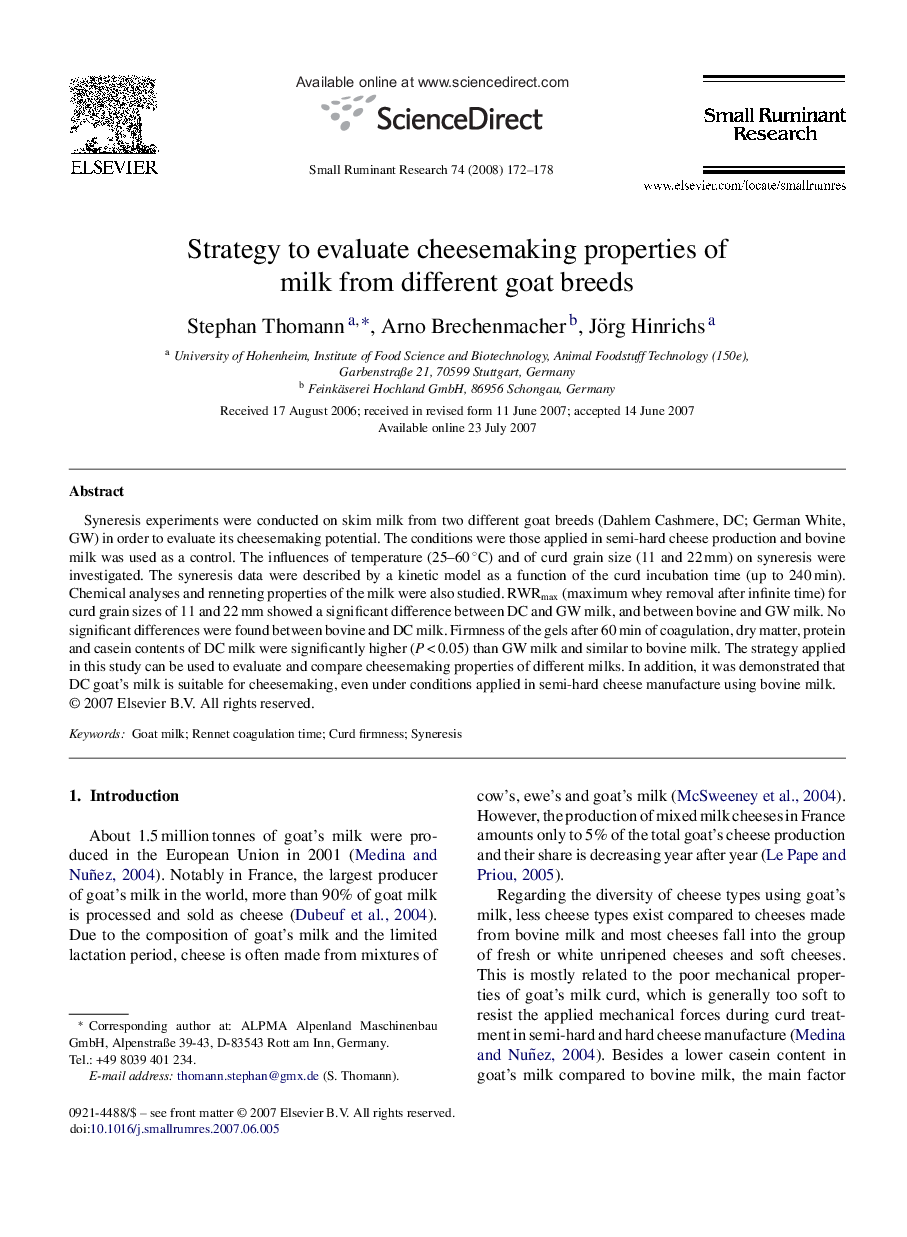| Article ID | Journal | Published Year | Pages | File Type |
|---|---|---|---|---|
| 2457963 | Small Ruminant Research | 2008 | 7 Pages |
Syneresis experiments were conducted on skim milk from two different goat breeds (Dahlem Cashmere, DC; German White, GW) in order to evaluate its cheesemaking potential. The conditions were those applied in semi-hard cheese production and bovine milk was used as a control. The influences of temperature (25–60 °C) and of curd grain size (11 and 22 mm) on syneresis were investigated. The syneresis data were described by a kinetic model as a function of the curd incubation time (up to 240 min). Chemical analyses and renneting properties of the milk were also studied. RWRmax (maximum whey removal after infinite time) for curd grain sizes of 11 and 22 mm showed a significant difference between DC and GW milk, and between bovine and GW milk. No significant differences were found between bovine and DC milk. Firmness of the gels after 60 min of coagulation, dry matter, protein and casein contents of DC milk were significantly higher (P < 0.05) than GW milk and similar to bovine milk. The strategy applied in this study can be used to evaluate and compare cheesemaking properties of different milks. In addition, it was demonstrated that DC goat's milk is suitable for cheesemaking, even under conditions applied in semi-hard cheese manufacture using bovine milk.
